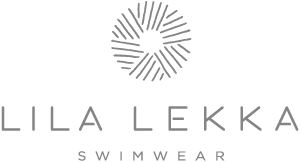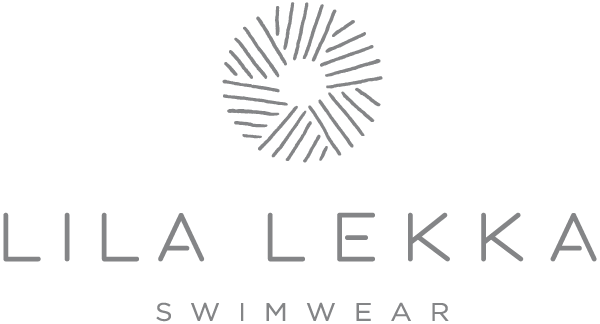Ultimately, it’s that all-importance balance between high inventory counts and low inventory counts. EOQ considers the timing of reordering, the cost incurred to place an order, and the costs to store merchandise. If a company is constantly placing small orders to maintain a specific inventory level, the ordering costs are higher, along with the need for additional storage space.
After all, there’s an opportunity cost for tying up money in inventory levels. The economic order quantity model is most commonly used to determine the costs of inventory in a given time period. EOQ applies only when demand for a product is constant over the year and each new order is delivered in full when inventory reaches zero. There is a fixed cost for each order placed, regardless of the number of units ordered; an order is assumed to contain only 1 unit.
How Is Economic Order Quantity Calculated?
In terms of how to calculate the economic order quantity formula, start with the assumption that order, demand, and holding costs are constant. In the EOQ formula, “EOQ units” equals the square root of 2x “unit annual demand” x “order cost per purchase order,” divided by annual holding cost per unit. The EOQ formula can be adjusted depending on production costs, lot size, setup costs, deductible expenses definition and lead time. While some companies use a fixed cost approach, others use the variable cost model in their formula to account for these sensitivities. The EOQ calculation can be used to find a good balance of order size and number of orders, considering any available quantity discounts. Holding cost is the total costs a company incurs to hold inventory in a warehouse or store.
- Economic Order Quantity helps a business time its orders for inventory to avoid low stocks and dead stocks situations.
- Finally, we’ve totalled all the costs per operation in order to come up with our total cost for each order, which in our example is £3.33.
- Our customers have access to a broad network of industry partnerships, EDI connections, retailer relationships, ERP, and ecommerce integrations.
- The EOQ assumes that holding and ordering cost remain constant, which may not always be the case.
Those products don’t look expensive just sitting there on a shelf, but every second they are costing you money in storage fees, employee salary, and other miscellaneous overhead costs. Sometimes it makes sense for a retailer to buy a product in bulk from the vendor to get a discount. In such cases, buying items in fewer installments can actually optimize the retailer’s costs despite what the EOQ predicts. Sure, the most economical replenishment strategy would be ordering 750 cement bags at a time.
How to Find the Optimal Order Size
The Economic Order Quantity (EOQ) is known as a cash flow tool that helps to control cash that has been held down in a company’s inventory balance. Minimizing the level of inventory means more cash for other business investments. Businesses operate better when they are aware of their ideal Economic Order Quantity. Economic Order Quantity helps a business time its orders for inventory to avoid low stocks and dead stocks situations. Using EOC helps the company stay ahead of demands and not run out of stocks. Stocks are available in abundance and deadlines are easily met when you use the Economic Order Quantity to perfection.
Rely on the most modern logistics tech you need, backed by a 100 person development team, to control and optimize your supply chain. Whether you’re a brand managing orders and inventory, or a 3PL operating warehouses, we’ve got you covered. The EOQ model doesn’t work for every business model, but it has key benefits every company should consider. If actual units are not available, then you can use expected sales figure based on your sales trend. At Business.org, our research is meant to offer general product and service recommendations. We don’t guarantee that our suggestions will work best for each individual or business, so consider your unique needs when choosing products and services.
A company can optimize the costs related to the space and maximize staff efficiency. It also helps determine the operating cash flow necessary to keep the business running. This model is valuable for a small business owner since it can reduce overhead costs.
Also, as the number of orders decreases, the ordering cost decreases but the holding cost increases. The Economic Order Quantity (EOQ) is an inventory management system that ensures a company orders the right amount of inventory that meets the demand for the product. Businesses use it as a valuable tool to make decisions about the number of inventory to order and keep, and how often to reorder to attract the lowest possible costs. In our example, we’ll assume that the company purchases widgets during a given year. The company’s carrying costs of 3% are then multiplied by this £25.00, which gives us £0.75 carrying cost on each unit.
What is EOQ?
The Economic Order Quantity formula only works when the holding costs, ordering costs, and annual demand is predictable. To calculate the EOQ for inventory you must know the setup costs, demand rate, and holding costs. In some businesses, those costs may change because of many factors. So even if your order quantity is constant, fluctuating costs may still make your EOQ calculation inaccurate. Businesses must be equipped to gather the data to make an accurate calculation. This refers to all the costs that are involved in storing or handling the items in your store or warehouse.
Finally, you must define your carrying costs for each unit you purchase. Economic order quantity (EOQ) is the theoretically ideal quantity of goods that a firm should purchase that minimizes its inventory costs. For example, consider a retail clothing shop that carries a line of men’s shirts. It costs the company $5 per year to hold a single shirt in inventory, and the fixed cost to place an order is $2. Help with inventory management is one of the many benefits to working with a 3PL.
ECONOMIC ORDER QUANTITY (EOQ) MODEL: Inventory Management Models : A Tutorial
Economic order quantity will be higher if the company’s setup costs or product demand increases. On the other hand, it will be lower if the company’s holding costs increase. Most companies focus on their carrying costs, while ignoring, or better put, not understanding the second cost of lost business due to low inventory levels.
The EOQ tells you how much of a product you should order, so you can easily use that number when manually creating purchase orders in your POS system, if it has that functionality. But there are also ways to use the EOQ with reorder points to streamline your inventory management workflow. To minimize holding and order costs, the furniture company should order 26 units. Ordering costs refer to all the costs incurred each time an order is placed for inventory with the company. Economic Order Quantity is valuable to both small and big business owners. It assists managers in taking decisions on the number of times they make orders on a particular item, how often they reorder to get low possible costs and how much inventory they have.
Calculate the square root of the result
Economic order quantity is an inventory management technique that helps make efficient inventory management decisions. It refers to the optimal amount of inventory a company should purchase in order to meet its demand while minimizing its holding and storage costs. One of the important limitations of the economic order quantity is that it assumes the demand for the company’s products is constant over time. The EOQ formula helps you determine your total inventory costs (including both production and storage costs). You can use this formula to determine the optimal quantity of products you should order at a time and how often to order (assuming customer demand stays constant). The economic order quantity (EOQ) refers to the ideal order quantity a company should purchase in order to minimize its inventory costs, such as holding costs, shortage costs, and order costs.
On the other hand, too little inventory can lead to stock-outs which will cause you to lose sales. Having to reorder goods frequently also racks up transportation costs.By calculating EOQ, a business can determine when an order is to be placed and how much is to be ordered. This allows the company to make strides towards being as cost-efficient as possible while ensuring that production and sales continuity is guaranteed. Without it, companies will tend to hold too much inventory during periods of low demand, while also holding too little inventory in periods of high demand. In supply chain management, the economic order quantity model (EOQ) is a useful measurement tool. The EOQ formula helps those in logistics and operations calculate the frequency and number of orders.
EOQ is necessarily used in inventory management, which is the oversight of the ordering, storing, and use of a company’s inventory. Inventory management is tasked with calculating the number of units a company should add to its inventory with each batch order to reduce the total costs of its inventory. Economic order quantity (EOQ) is a term for the ideal quantity a company should purchase to minimize its inventory costs, like shortage or carrying costs. The overall goal of economic order quantity is to decrease spending; its formula is used to identify the greatest number of units needed (per order) to reduce buying. An e-commerce retailer might place regular orders for a favorite consumer item, X. The retailer needs to think about total inventory costs, including the purchase cost for that unit, quantity discounts, ordering costs, shipping costs, holding cost, and storage costs.



